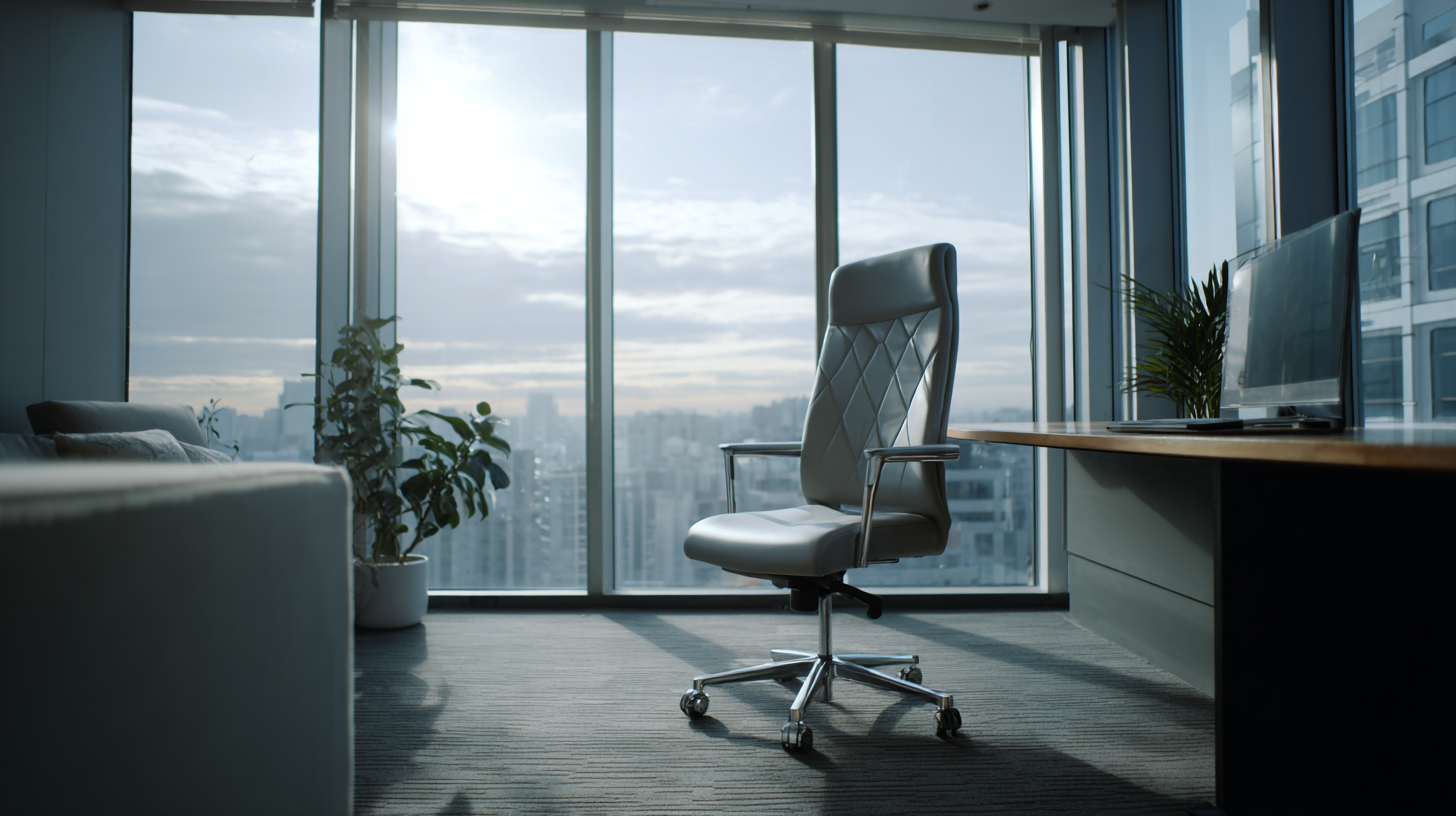Challenges in Finding the Best Office Chair for Global Buyers
In the ever-evolving landscape of office furniture, the search for the best office chair poses significant challenges for global buyers. According to a report by the International Facility Management Association (IFMA), ergonomically designed office chairs can enhance employee productivity by up to 17%, underscoring the importance of making informed choices. With China's dominance in manufacturing, accounting for over 30% of the world's furniture exports, buyers are increasingly seeking high-quality office chairs that blend comfort, design, and functionality. However, navigating this competitive market requires an understanding of diverse ergonomics standards and evolving consumer preferences, making it crucial to identify reliable manufacturers and innovative designs that cater to a globalization of workspace needs.

Understanding Global Buyer Preferences in Office Chairs
The global office chair market is experiencing a steady growth trajectory, with market size expected to expand from
$18.3 billion in 2025 to
nearly $19.9 billion by 2032, reflecting a compound annual growth rate (CAGR) of
1.64%. This growth is driven by an increasing demand for
ergonomic designs that cater to diverse user preferences across various regions. Understanding how global buyers
prioritize features such as sustainability, comfort, and functionality is crucial for manufacturers looking to
capture significant market share.
One key factor influencing buyer preferences is the rising emphasis on ergonomic office chairs, which are projected
to grow from $1 billion in 2022 to
$1.85 billion by 2030 at a remarkable CAGR of
7.8%. This indicates a burgeoning awareness among
consumers about the importance of health and well-being in the workplace. To cater to this trend, it is imperative
for suppliers to design products that incorporate adjustable features and high-quality materials that provide
superior comfort over prolonged use.
Tips: When selecting an office chair,
consider investing in models that offer adjustable lumbar support and breathable fabrics. Additionally, look for
certifications that indicate environmental sustainability. This will not only enhance user experience but also align
with global trends toward eco-friendly products.

Key Design Considerations for Diverse Work Environments
When searching for the ideal office chair, global buyers face unique challenges shaped by diverse work environments. One of the key design considerations is adaptability. An office chair must cater to various needs, including ergonomic support and mobility, to accommodate both remote workers and in-office teams. Chairs that offer adjustable seat height, lumbar support, and armrest configurations allow for versatile use across different body types and work styles.

Tips for selecting an office chair include checking for certifications such as Ergonomics and ANSI/BIFMA to ensure compliance with industry standards. Additionally, consider chairs with breathable materials that enhance comfort during extended periods of sitting. Look for chairs that provide customizable features so employees can tailor their seating experience to their preferences.
Another essential aspect is aesthetic appeal. Office chairs should blend with the overall design of a workspace, which varies greatly across cultures. A visually pleasing chair can enhance the productivity of a team while contributing to a cohesive atmosphere. Opt for colors and styles that resonate with the company culture while still being functional.
Material Choices: Balancing Comfort and Sustainability
When selecting an office chair, global buyers face a plethora of challenges, particularly regarding material choices. As the workforce becomes increasingly diverse and remote, the demand for chairs that are both comfortable and sustainable has risen sharply. Comfort is paramount; employees often spend hours seated, and a chair that fails to provide adequate support can lead to health issues. However, sustainability cannot be overlooked. Consumers are becoming more eco-conscious, seeking products made from renewable or recycled materials that minimize their environmental impact.
The balance between comfort and sustainability is critical in chair design. Many manufacturers are experimenting with innovative materials that not only offer ergonomic benefits but are also sourced responsibly. For instance, chairs made from reclaimed wood or recycled plastics can provide comfort while reducing waste. Additionally, manufacturers are exploring bio-based materials derived from plants that exhibit similar qualities to traditional upholstery. This shift towards sustainable design not only addresses consumer demand but also sets a new standard in the industry, urging companies to rethink their production processes and material choices. In this evolving landscape, global buyers are increasingly empowered to prioritize both their well-being and the health of the planet.
Technological Innovations Shaping the Future of Office Seating
In recent years, the landscape of office seating has transformed dramatically, influenced by technological innovations that cater to the evolving needs of global buyers. Ergonomics has taken center stage, with manufacturers integrating advanced materials and designs that not only enhance comfort but also promote better posture and productivity. Features like adjustable lumbar support, breathable mesh fabrics, and customizable seat height have become standard, allowing users to tailor their chairs to fit their unique body types and working styles.
Additionally, the advent of smart technology has started to reshape the office chair industry. Modern office chairs now come equipped with sensors that monitor posture and provide real-time feedback, urging users to make adjustments to avoid strain. Some chairs even integrate with health apps to help track sitting habits and suggest breaks, aligning with a growing emphasis on workplace wellness. As global buyers seek solutions that address both comfort and health, the interplay of technology and design will continue to redefine the best office chairs for diverse work environments.
Challenges in Finding the Best Office Chair for Global Buyers - Technological Innovations Shaping the Future of Office Seating
| Dimension | Description | Importance | Technological Innovations |
|---|---|---|---|
| Ergonomics | Design that supports the natural posture of the user | Critical for comfort and health | Adjustable lumbar support systems |
| Material Quality | Durable and comfortable fabrics and foams | Impacts longevity and daily comfort | Breathable mesh and memory foam technologies |
| Adjustability | Features that allow customization for different body types | Enhances user experience and convenience | Smart chair adjustments via mobile apps |
| Mobility | Ease of movement within a workspace | Promotes flexibility and productivity | Wheel design innovations for smoother gliding |
| Aesthetics | Visual appeal and design style of the chair | Influences workplace atmosphere | Customizable colors and materials |
| Price Range | Cost considerations for different budgets | Essential for accessibility to various buyers | Value-added features that justify pricing |
Navigating Cultural Differences in Ergonomic Needs
When it comes to selecting the best office chair for global buyers, understanding the cultural differences in ergonomic needs is paramount. Research indicates that ergonomic preferences vary significantly across regions; for instance, a study by the International Journal of Industrial Ergonomics found that North American workers often prioritize lumbar support, while European preferences lean towards adjustable features for flexibility. This highlights the importance of manufacturers customizing their offerings to cater to varying ergonomic requirements based on cultural contexts.
Tips: To effectively navigate these differences, global buyers should engage in thorough market research. Understanding regional preferences can help in selecting designs that cater to specific needs. Additionally, involving local representatives can provide valuable insights into the ergonomic standards prominent in different markets.
Another critical observation is that cultural attitudes toward work and posture can affect chair design requirements. For example, Japanese workers may prefer minimalist designs with compact features that reflect their work environment’s spatial constraints. Similarly, different cultures may adopt varying postures during work, influencing chair design choices.
Tips: When sourcing office chairs internationally, consider conducting user surveys to gather data on ergonomic preferences in different cultures. This feedback can guide product development and ensure better alignment with the target market's needs.
